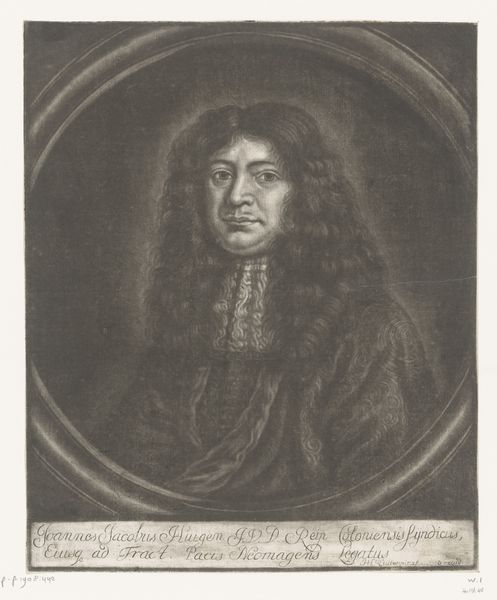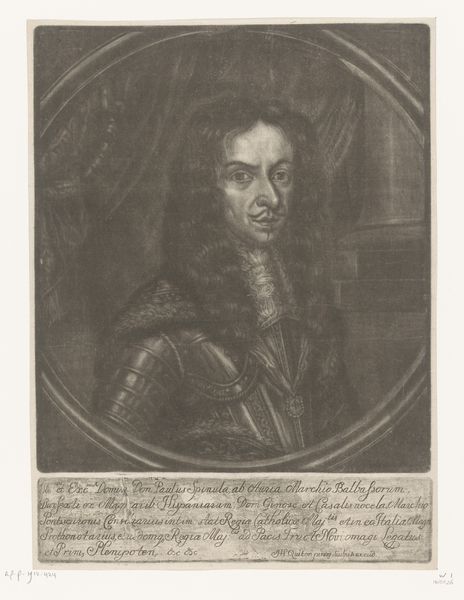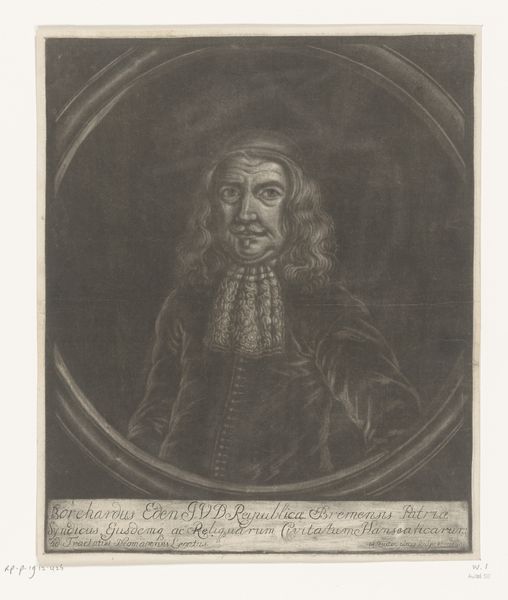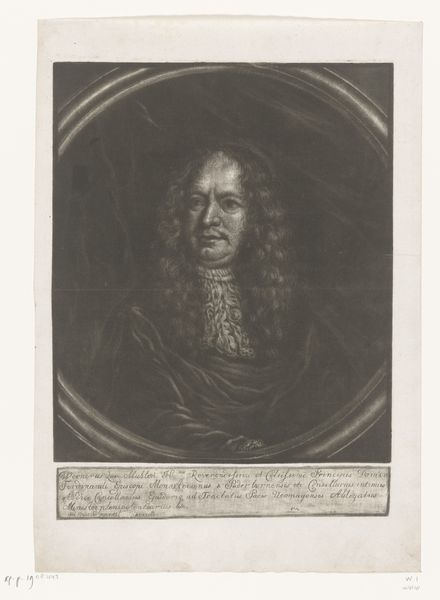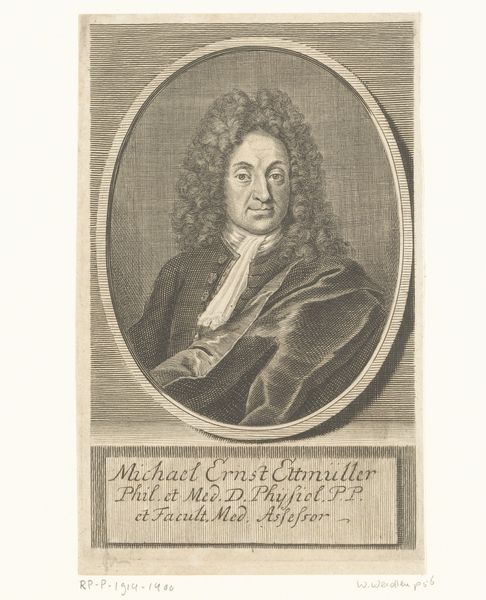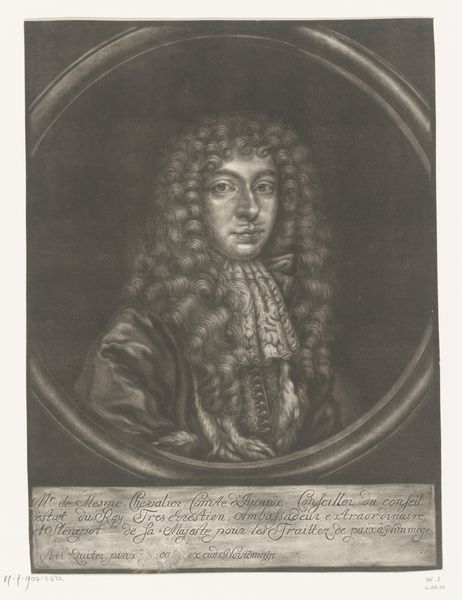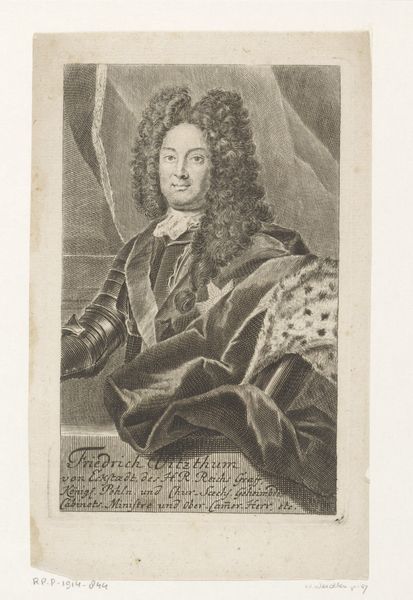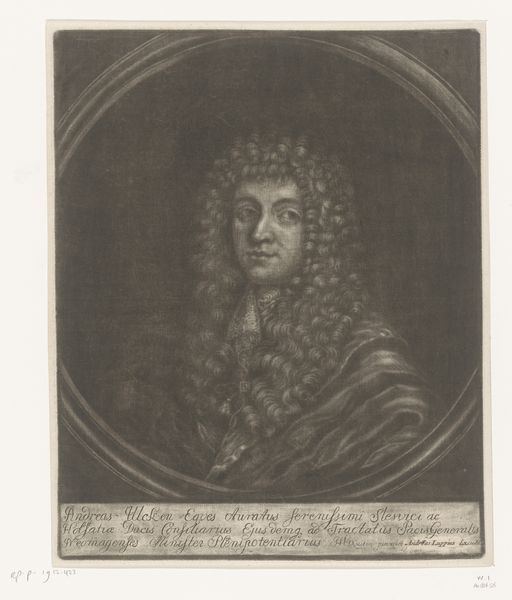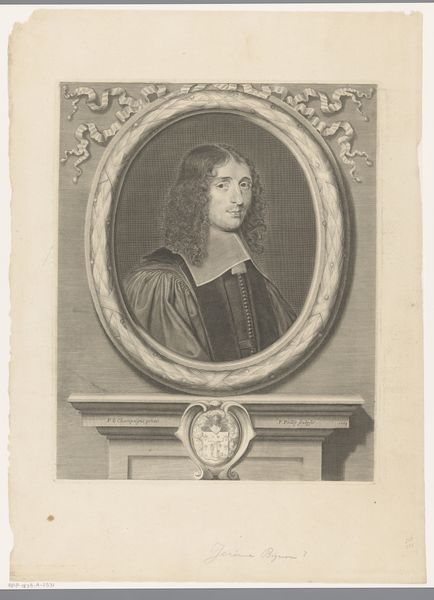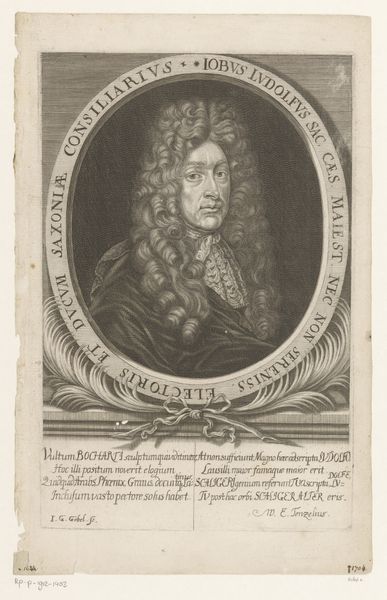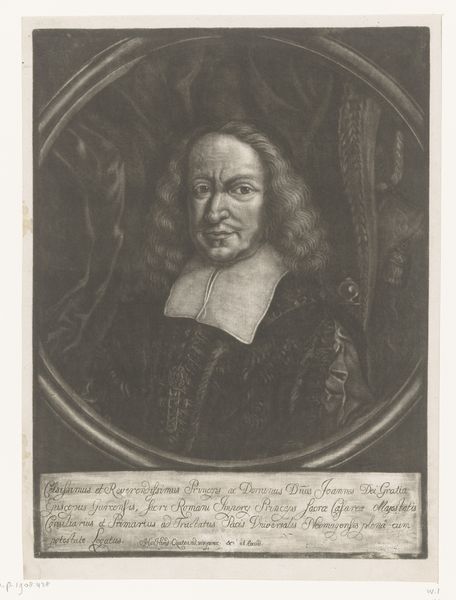
print, engraving
#
portrait
#
baroque
# print
#
old engraving style
#
portrait drawing
#
engraving
Dimensions: height 340 mm, width 248 mm
Copyright: Rijks Museum: Open Domain
Curator: Let's consider this engraving, "Portret van Pedro Ronquillo Briceño," made in 1679 by Herman Hendrik Quiter. It’s an intriguing portrait. Editor: Indeed! I noticed the incredible detail in the rendering of the lace collar and the flowing wig. What’s particularly interesting to you about this piece? Curator: Well, beyond the immediate visual, it is interesting to examine the print as a reproducible object, intended for wider circulation. Consider the materials used - the paper, the inks, and the metal plate from which this was etched. How do these material choices affect its value and its availability to different segments of 17th-century society? This wasn’t unique and was reproducible, so we must think about the socio-economic implications. It brings up a fundamental question: what transforms reproducible materials into ‘art’ and assigns it such high value, socially and economically? Editor: That's a very different angle than I initially considered, moving beyond aesthetics. Does the act of reproduction diminish the value or elevate it by making the image accessible? Curator: It's both, isn't it? It challenges the auratic status traditionally associated with singular art objects. By questioning the artwork’s relationship to labour and distribution, we reveal that “high art” is not separate from craft. Editor: So by understanding the labor and distribution, you provide it more nuance? It shifts our focus from merely admiring the subject of the portrait to understanding its role within a broader economic and social landscape. Curator: Precisely. We can look past the surface image, focusing on revealing production values, material qualities and consumption practices to understand the context. This helps us realize a different narrative, one that might otherwise remain obscured. Editor: I will never look at an engraving the same way! I can appreciate this work on more levels now, seeing the artwork not just as image, but material object embedded in a historical system of production. Curator: I agree, these layers invite reflection about production. And hopefully, it can expand that reflection in other areas too.
Comments
No comments
Be the first to comment and join the conversation on the ultimate creative platform.
